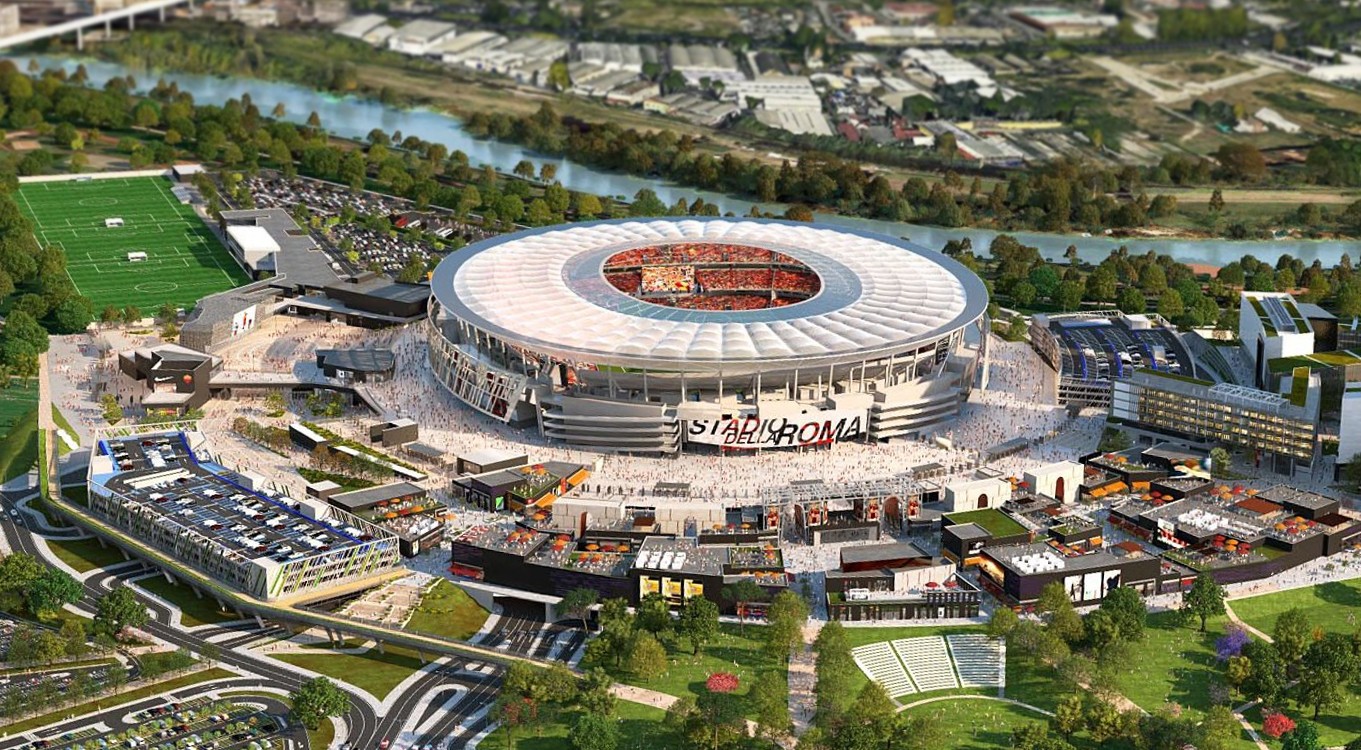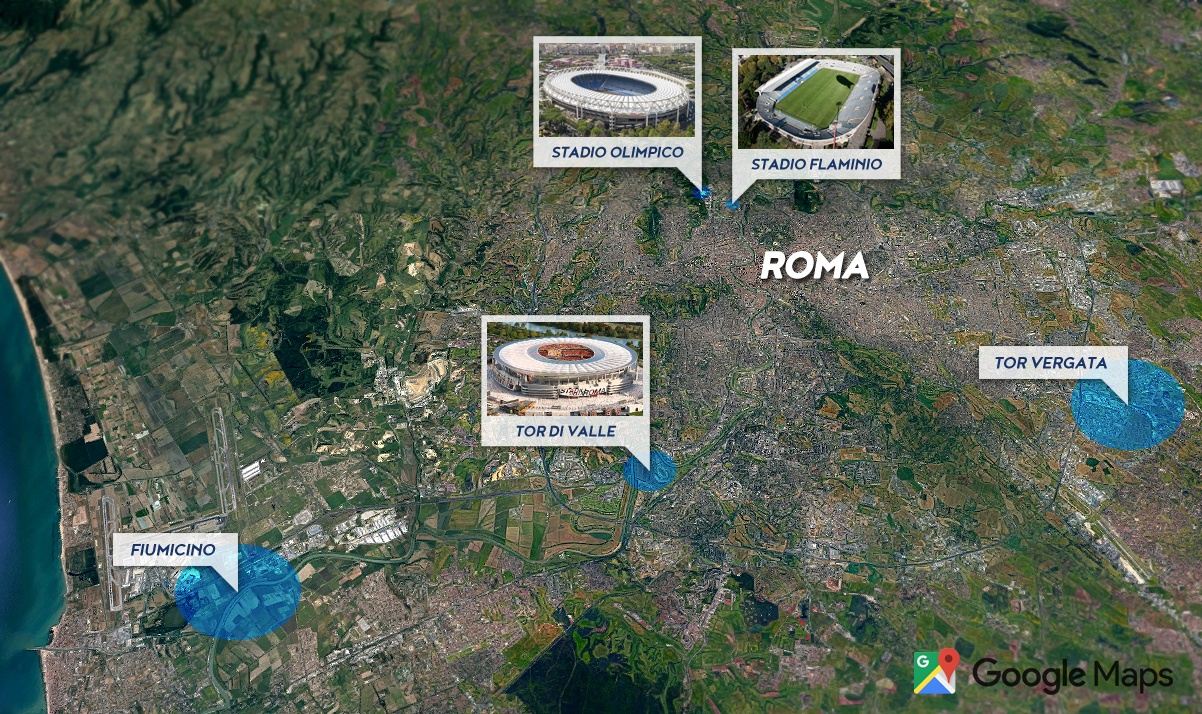Rome: AS Roma’s problems with location of new stadium
source: StadiumDB.com [TS]; author: Tomasz Sobura
 The chances of building a new AS Roma stadium in Tor di Valle are decreasing. It turned out that the legal status of the land in that location is not fully clarified. Club owner Dan Friedkin looks more and more favourably towards Stadio Flaminio, the venue where the Romans played in the 1989/90 season.
The chances of building a new AS Roma stadium in Tor di Valle are decreasing. It turned out that the legal status of the land in that location is not fully clarified. Club owner Dan Friedkin looks more and more favourably towards Stadio Flaminio, the venue where the Romans played in the 1989/90 season.
Advertisement
The case was joined by Renzo Piano - a famous Italian architect who, together with the club's chairman, is analyzing the possibility of building a stadium in Flaminio.
Friedkin and Piano backing up Flaminio stadium
Dan Friedkin is not going to fight at all costs to build the stadium on the site of the former hippodrome in the Tor di Valle district. The stadium project for this location is 6 years old and involves much greater financial outlays than the investment in Flaminio.
On behalf of the owner of AS Roma, JP Morgan Bank carried out an analysis that confirmed that the construction of a stadium for 52,000 spectators in Tor di Valle, together with a shopping and entertainment complex, could amount to as much as € 1 billion.
In addition, there are problems with the ownership of land, which changed its owner several times in the last 10 years. Currently, it is in possession of the Czech businessman Radovan Vitek, who bought it from Eurnova.

Complications with Tor di Valle brought Friedkin into contact with Renzo Piano - one of the world's greatest architects. Piano gave Friedkin a positive opinion on the new location of the stadium on the basis of the Stadio Flaminio. It is difficult to argue with a world-famous architect whose portfolio includes buildings that have gained international recognition.
His greatest work is the Center Georges Pompidou in Paris, built in the 70s of the last century. The Shard skyscraper in London should be mentioned among the latest achievements of Renzo Piano. Piano was also famous for the Stadio San Nicola project in Bari, which was quite an innovative concept at the turn of the 1980s and 1990s.
Stadio Flaminio as the voice of reason
Stadio Flaminio is over 60 years old. It was built for the 1960 Olympics in Rome. If the above-mentioned location was accepted for the new home of AS Roma, a stadium for 45,000 spectators would be built there. This would mean the return of the Romans to Stadio Flaminio after more than 30 years. The Giallorossi played there one season while Stadio Olimpico was rebuilt for the 1990 World Cup.
First estimates say that playing at Flaminio will require an investment of around € 350 million (almost 3 times less than at Tor di Valle). One of the unusual problems to be solved is the ancient necropolis located under the stadium. Theoretically, underground parking lots would be created there, but it is not known whether it will not be undermined by archaeologists.
As an alternative location for parking spaces, former boxing and fencing facilities located under the stands of the stadium are considered. In the case of building a facility in this place, the consent of the Ministry of Cultural Heritage and Tourism will be required, and it is not certain that such consent will be issued.
A positive news for the club's fans is the fact that the Italian government last year issued an ordinance that simplified the legal regulations regarding the revitalization of historic buildings, such as Stadio Flaminio. The City Council of Rome, who owns the land in Flaminio, is considering issuing a concession to the club for a 99-year lease of the land. A similar maneuver was used in the case of the new Juventus stadium in Turin. At present, Stadio Flaminio is a venue for rugby matches.
 Above are all locations analysed as of now, in relation to Stadio Olimpico where the club has been playing for decades.
Above are all locations analysed as of now, in relation to Stadio Olimpico where the club has been playing for decades.
Another location under consideration for building the stadium for AS Roma is Tor Vergata. This would mean starting the entire construction process from scratch, and thus distancing from the start of works for a few more years. The problem of this location is poor communication with the rest of the city. The City Council of Rome is planning to extend the underground line to Tor Vergata, for which they intend to spend € 25 million.
The last, quite abstract concept was the moving of the Giallorossi outside Rome to the vicinity of the Fiumicino airport, which was immediately rejected by the fans. Reconstruction of Stadio Olimpico is not an option as AS Roma would like to have its own stadium and benefit from it, and the current facility is in the hands of the Italian Olympic Committee, which does not intend to sell it.
Author: Tomasz Sobura
Advertisement
 StadiumDB
StadiumDB